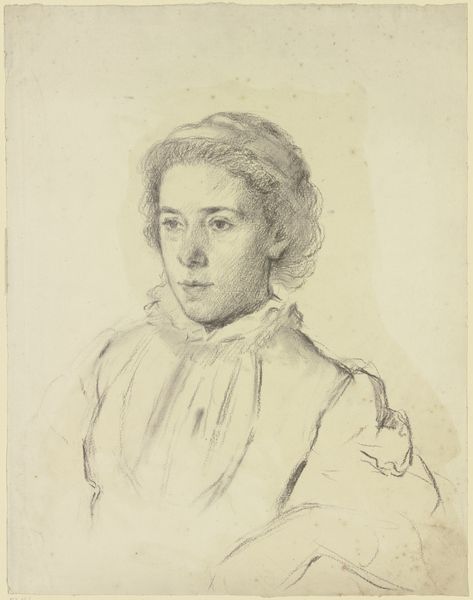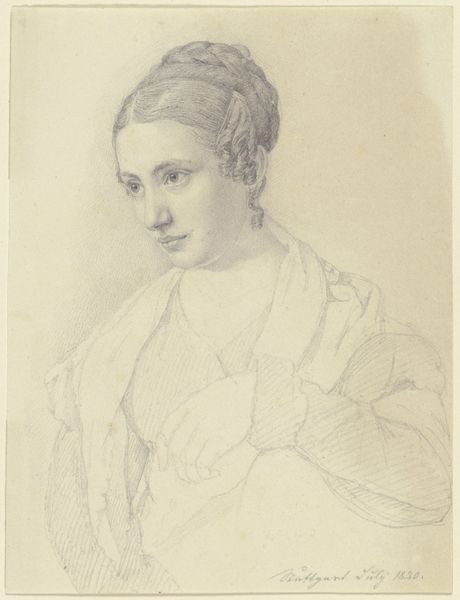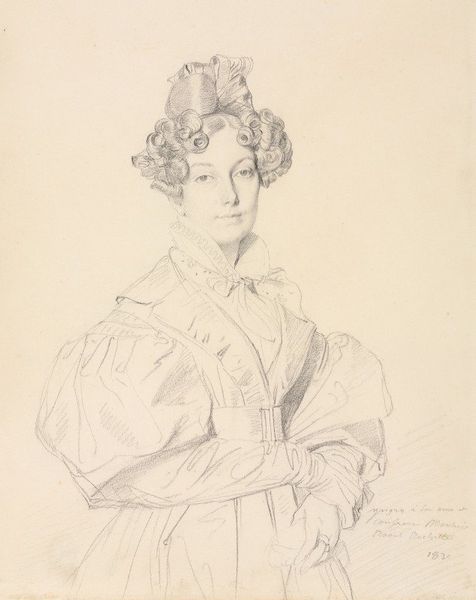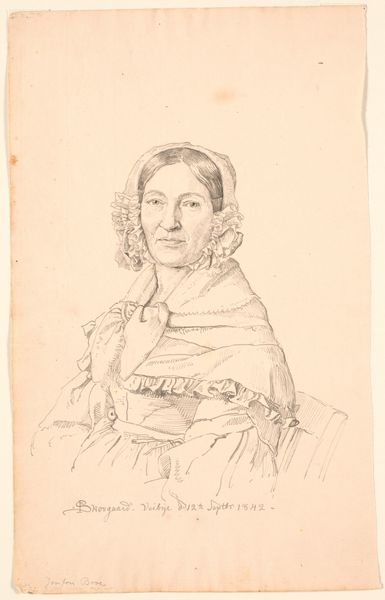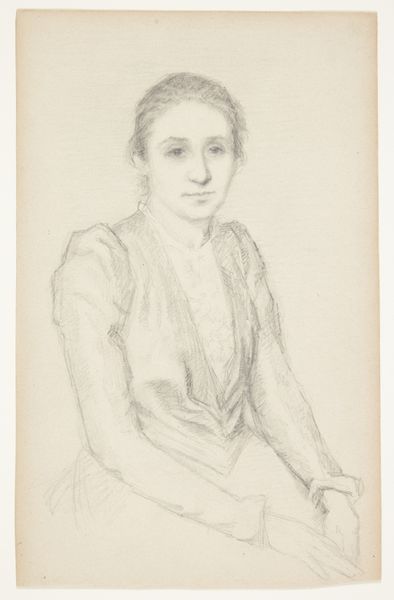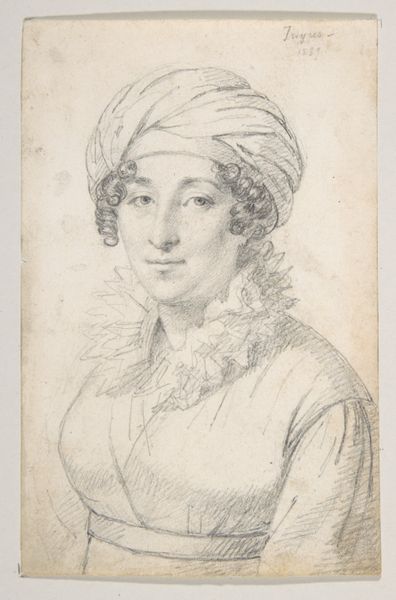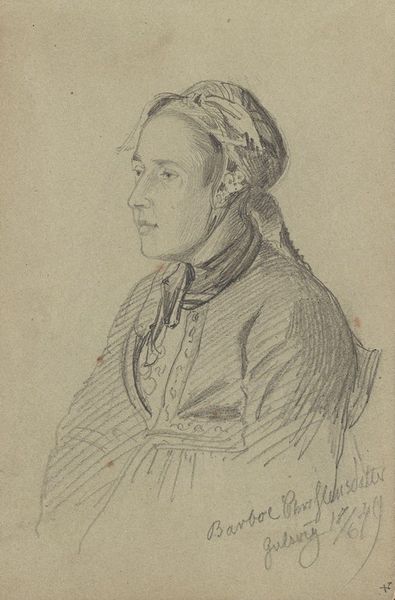
Bildnis der Tochter des Wirtes im Hessischen Hof zu Homburg vor der Höhe 15 - 1821
0:00
0:00
Copyright: Public Domain
Curator: This is Nikolaus Hoff's "Bildnis der Tochter des Wirtes im Hessischen Hof zu Homburg vor der Höhe," a pencil drawing completed around 1815-1821. Editor: It strikes me as a quiet, almost introspective portrait. The delicate pencil work creates a soft, intimate mood, doesn't it? Curator: Absolutely. And considering the historical context, such intimate portraits served specific social functions. Portraiture was closely linked with identity and social standing. In this particular instance, it portrays the daughter of a local innkeeper; this represents a subtle shift in class representation, giving face and importance to members of the working class. Editor: I'm immediately drawn to the process itself. Think about Hoff, carefully choosing his pencils, perhaps even grinding his pigments, to capture her likeness. It speaks to a direct engagement with materials and the act of observing and transcribing reality. And the paper too, it had to be made! How do the materials play into the story that’s being told about the subject? Curator: Well, within Romanticism and its emerging Realism, artists start to engage with common people rather than royalty, and we can interpret it through feminist theory: Who has traditionally been given a face or has the freedom to choose to be displayed in art? Furthermore, it makes me wonder about the relationship dynamics between the artist and the sitter—was this commissioned, or a work of personal admiration? The answer surely shapes the reading of the work. Editor: It prompts questions about the economic realities surrounding art production, the patron and artist relationship and the role of labor. How long did she sit for the portrait? How were materials procured, by whom? It grounds the work in social history. Curator: Indeed. Reflecting on these kinds of artistic creations broadens the narratives we tell and makes the stories behind them much more inclusive, allowing us to view artwork not in isolation but rather as manifestations of a wider context. Editor: By bringing forth labor and its social dynamics to the forefront, we gain a different angle through which we may interpret, making art history much more immediate and tangible.
Comments
No comments
Be the first to comment and join the conversation on the ultimate creative platform.
